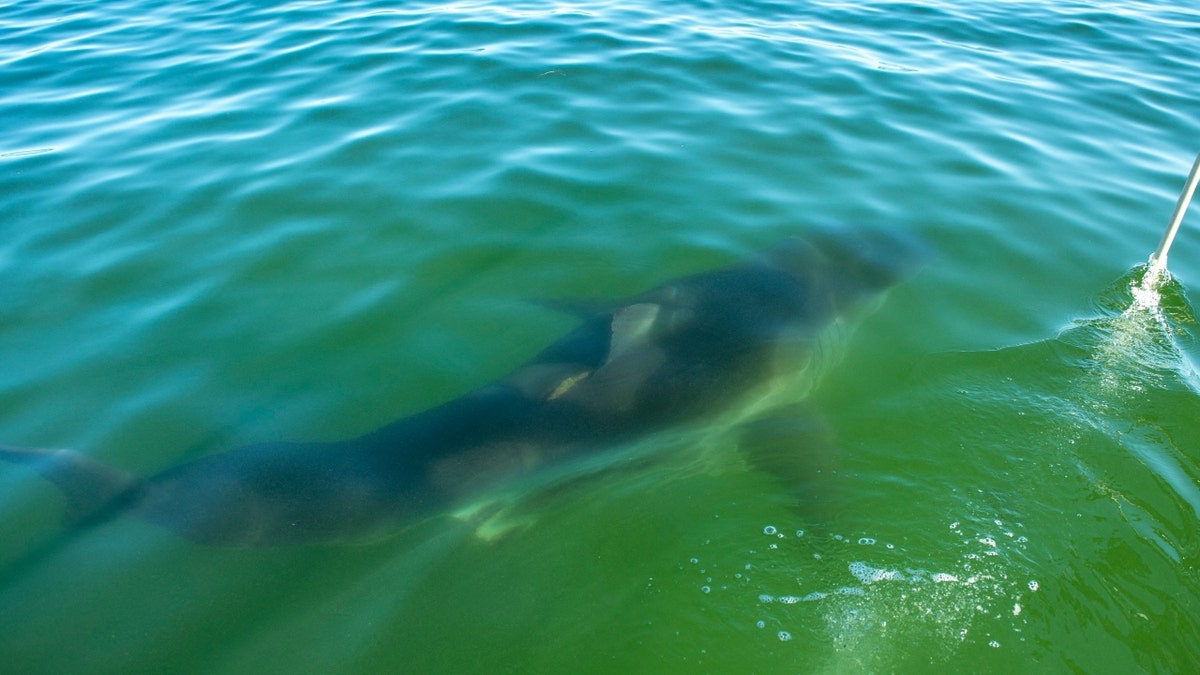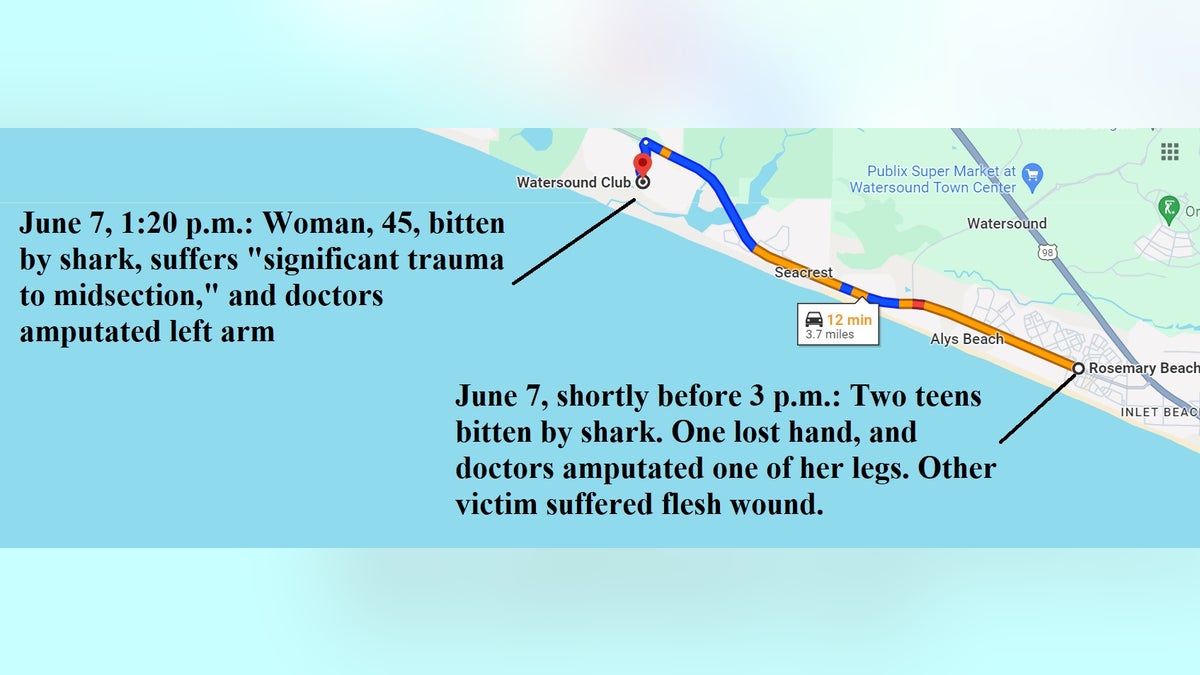Hammerhead shark in Florida seen circling paddleboarders
A hammerhead shark was spotted overhead swimming chillingly close to paddleboarders and beachgoers in St. Petersburg, Florida. (See Through Canoe)
Marine biologists completely flipped the script on a prevailing theory about the series of shark attacks in Florida's Panhandle that injured three people on June 7.
Many believed the sharks had been attracted to a large number of orcas that were spotted on June 4 about 75 miles south of the June 7 shark attacks.
One bull shark was believed to have bitten three people over a 90-minute span along two beaches less than five miles apart, the sheriff's office in Walton County, Florida, told USA Today.
But marine biologist Jesús Erick Higuera-Rivas doesn't think it was the same shark.
"That doesn't make any sense," Higuera-Rivas told Live Science.
VACATIONING DOCTOR SAW BLOOD IN THE WATER AND REACTED

Dr. Greg Skomal, Shark Researcher for Massachusetts Marine Fisheries, captures video footage of a Great White Shark, while the crew listens for its radio tag, off the coast of Chatham, Massachusetts, on October 21, 2022. (JOSEPH PREZIOSO/AFP via Getty Images)
Higuera-Rivas studies orca behavior at the Pelagic Protection and Conservation Civil Association in Mexico, including how they interact with other aquatic species.
He told Live Science that the orcas had likely been in the region the entire time, but they were recently noticed because summer tourism brings an influx of people to the area.
WATCH: HAMMERHEAD SHARK CIRCLES PADDLE BOARDERS
The same thing could be said for what he believes are "unconnected attacks," Live Science reported.
Essentially, the more beach activity along the shores where bull sharks typically feed, the higher the likelihood of a shark bite, according to Higuera-Rivas.
His thinking was backed by Gavin Naylor, a shark expert from the University of Florida, who told Live Science that Florida's hot, dry weather is likely a major factor.

Three people were bitten by sharks in a 90-minute span about four miles apart along Walton County, Florida, beaches on June 7. (Google Maps)

Florida, which has 1,350 miles of coastline, once again dominated the U.S. bite total, the study says. Percentages in these charts are approximations. (Florida Museum of Natural History’s International Shark Attack File)
Naylor, who is the shark research director at the University of Florida, said that orca and shark confrontations typically happen far offshore, giving sharks a chance to hide or escape.
Bull sharks were likely chasing bait fish that swam closer to the shores than usual because of the heat, which impacts the freshwater output from the estuaries.
FLORIDA IS NAMED THE SHARK ATTACK CAPITAL OF THE WORLD
"When there's less estuarine output, then the saltwater can come closer to the shore than it would normally do, and that brings with it the plankton, and the bait fish that eat them," Naylor told Live Science.
And those little bait fish attract aggressive bull sharks that bit a teenage girl's hand off, caused severe trauma to a woman's midsection and gave another teenager a flesh wound last Friday.
BULL SHARK VS. JET SKIER
CLICK HERE TO GET THE FOX NEWS APP
All three victims survived, but the teenager lost her left hand, and doctors amputated her right leg. The 45-year-old woman's arm needed to be amputated as well.
They were bitten by a shark, or sharks, along a four-mile stretch of beaches in Walton County, Florida, over 90 minutes starting around 1:20 p.m. on June 7.




